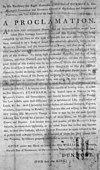The Virginia Portal  Virginia, officially the Commonwealth of Virginia, is a state in the Southeastern and Mid-Atlantic regions of the United States between the Atlantic Coast and the Appalachian Mountains. The state's capital is Richmond and its most populous city is Virginia Beach. Its most populous subdivision is Fairfax County, part of Northern Virginia, where slightly over a third of Virginia's population of 8.7 million live. Eastern Virginia is part of the Atlantic Plain, and the Middle Peninsula forms the mouth of the Chesapeake Bay. Central Virginia lies predominantly in the Piedmont, the foothill region of the Blue Ridge Mountains, which cross the western and southwestern parts of the state. The fertile Shenandoah Valley fosters the state's most productive agricultural counties, while the economy in Northern Virginia is driven by technology companies and U.S. federal government agencies. Hampton Roads is also the site of the region's main seaport and Naval Station Norfolk, the world's largest naval base. (Full article...) Selected article
The Gunpowder Incident (or Gunpowder Affair) was a conflict early in the American Revolutionary War between Lord Dunmore, the Royal Governor of the Colony of Virginia, and militia led by Patrick Henry.
On the night of April 20, 1775, well before news of the Battles of Lexington and Concord on the prior day had reached Virginia, Lord Dunmore ordered the removal of the gunpowder from the magazine (pictured) in Williamsburg, Virginia, which stored it for the militia. Royal marines went to loaded fifteen half barrels of powder into the governor's wagon, and began transporting it to the Royal Navy ship Magdalen in the James River. The act was discovered by townsfolk while underway, and they sounded an alarm. Local militia rallied to the scene, and riders spread word of the incident across the colony. Patrick Henry led a small militia force toward Williamsburg to force return of the gunpowder to the colony's control, arguing that it was owned by the colony and not the Crown. The matter was resolved without conflict when a payment of £330 was made to Henry. Fearing for his personal safety after the incident, Dunmore later retreated to a naval vessel, ending of royal control of the colony. Selected biography
Pocahontas (born Matoaka, and later known as Rebecca Rolfe, c. 1595 – 1617) was a Virginia Indian notable for her association with the colonial settlement at Jamestown, Virginia. Pocahontas was the daughter of Powhatan, the paramount chief of a network of tributary tribal nations in the Tidewater region of Virginia. In a well-known historical anecdote, she is said to have saved the life of an Indian captive, Englishman John Smith, in 1607 by placing her head upon his own when her father raised his war club to execute him.
Pocahontas was captured by the English during Anglo-Indian hostilities in 1613, and held for ransom. During her captivity, she converted to Christianity and took the name Rebecca. When the opportunity arose for her to return to her people, she chose to remain with the English. In April 1614, she married tobacco planter John Rolfe, the first recorded interracial marriage in American history. In 1616, the Rolfes traveled to London, where she became something of a celebrity. When the Rolfes set sail for home, Pocahontas died at Gravesend of unknown causes, where she was buried. Numerous places, landmarks, and products in the United States have been named after Pocahontas. Her story has been romanticized over the years, and she is a subject of art, literature, and film. This month in Virginia history
Random Virginia articleA random generator will select an article about… 
(note: generator may be slow) Things you can do
Tasks
Selected image Interior of St Andrew's Catholic Church in Roanoke, Virginia Did you know -
Fact sheet
State symbols:
Government
Related portalsVirginia topicsSubcategoriesSelect [+] to view subcategories
Associated WikimediaThe following Wikimedia Foundation sister projects provide more on this subject:
Discover Wikipedia using portals |


























